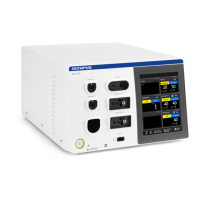102
Additional information
E1629, E1631-E1659, E1662-E1665, E1667-E1672, E1758, E1759, E1761-E1764, E1771,
E1773-E1777, E1783, E1784, E1788-E1790, E1792, E1799, E1800, E1803, E1804,
E1811-E1817, E1820, E1821, E1823-E1837, E1839-E1845, E1848-E1851, E1856-E1858,
E1860-E1863, E1875, E1876, E1878, E1880, E1881, E1884, E1892-E1902, E1906-E1908,
E1911, E1913-E1918, E1922, E1925, E1934-E1937, E1943-E1946, E1949-E1953, E1956,
E1957, E1959-E1961, E1965, E1980, E1981, E1990, E1991, E2024, E2025, E2036-E2041,
E2050, E2051, E2053, E2062-E2065, E2071-E2073, E2078, E2079, E2082, E2090, E2093,
E2095, E2099, E2106, E2108, E2115, E2116, E2118, E2120-E2126, E2128-E2132, E2135,
E2136, E2139-E2141, E2146, E2150, E2153, E2155, E2157, E2164, E2165, E2168,
E2170, E2172-E2175, E2177, E2178, E2180-E2186, E2189-E2195, E2199, E2201, E2202,
E2207, E2208, E2210, E2214, E2216, E2219-E2221, E2224, E2225, E2227-E2230, E2235,
E2237-E2239, E2241, E2247, E2248, E2336, E2343, E2345, E2351, E2354-E2360,
E2374-E2381, E2383, E2394, E2395, E2397, E2401, E2403, E2404, E2406-E2419,
E2421-E2424, E2426-E2432, E2447, E2448, E2451, E2454-E2456, E2458, E2460-E2462,
E2464-E2475, E2477, E2479-E2482, E2486, E2489, E2507-E2520, E2522-E2524, E2527,
E2529, E2532, E2533, E2550, E2574-E2576, E2586, E2587, E2590, E2595, E2596,
E2601, E2602, E2604-E2620, E2626-E2630, E2632-E2636, E2669, E2672, E2674, E2676,
E2680, E2683-E2693, E2695, E2698, E2699, E2703, E2704, E2706-E2712, E2715-E2717,
E2720, E2722, E2724-E2726, E2820, E2821, E2835-E2841, E2845-E2847, E2849, E2855,
E2857, E2883, E2893-E2896, E2898, E2902, E2907-E2911, E2914-E2919, E2921-E2927
Regarding tone information for alarms, refer to the section below.
17.2 Tone information
17.2.1 Alarm tones
Depending on the priority of an error, the alarm tones sound different.
Low priority errors
Duty cycle ...................................................................Intermitting signal (number of burst = 2)
Frequency .............................................................................................................. 220/330 Hz
Volume .....................................................................................................................≥ 65 dB(A)
Medium priority errors
Duty cycle ...................................................................Intermitting signal (number of burst = 3)
Frequency .............................................................................................................. 220/330 Hz
Volume .....................................................................................................................≥ 65 dB(A)
High priority errors
Duty cycle .................................................................Intermitting signal (number of burst = 10)
Frequency .............................................................................................................. 220/330 Hz
Volume .....................................................................................................................≥ 65 dB(A)
‒ The volume of alarm tones is not adjustable.
‒ The alarm tones for errors with low or medium priority can be switched off. Refer to the
section “5.5 Alarm tones” on page 38.
17.2.2 Activation tones for bipolar modes
Volume
With the lowest setting of the volume control, the volume of all activation tones is at least
40 dB(A).

